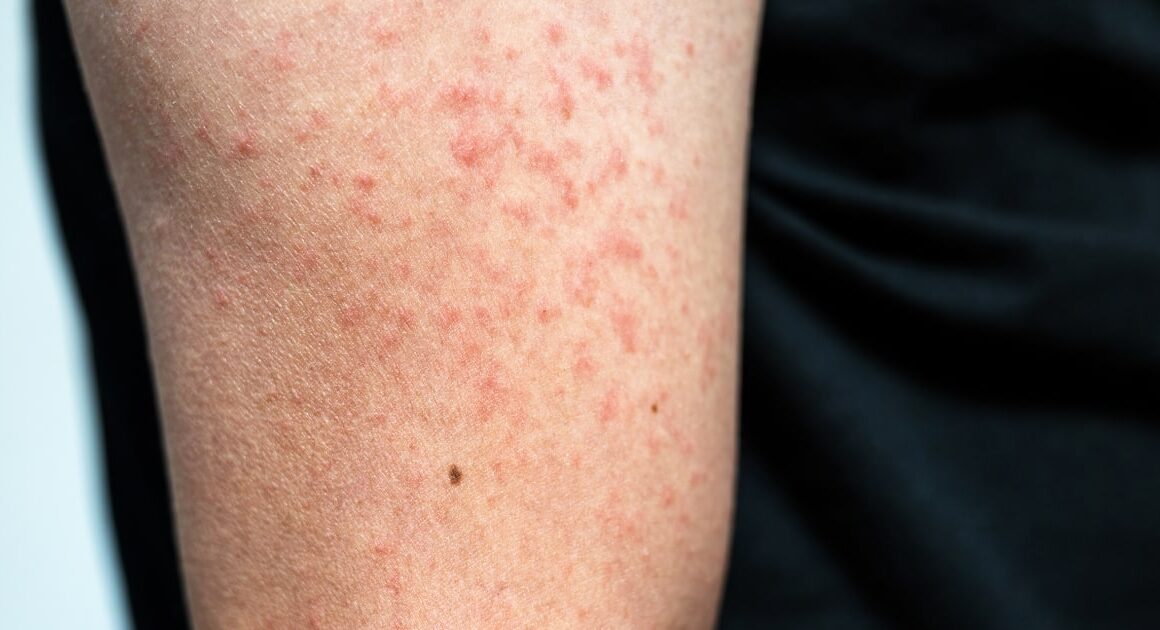The Summary
- The number of measles cases recorded so far this year is already triple the 2023 total.
- According to the CDC, 188 measles cases have been reported.
- Experts attribute the trend to declining vaccination rates in the U.S. and a rise in measles cases worldwide.
The number of measles cases recorded this year is more than triple the total from all of last year — with five months still to go.
According to data released Friday by the Centers for Disease Control and Prevention, 188 cases have been reported in 26 states and Washington, D.C. No deaths have been reported, but 93 people have been hospitalized — mostly children under 5 years old.
The U.S. has seen 13 measles outbreaks this year, the largest of which took off at a migrant shelter in Chicago in March and was linked to more than 60 cases.
This month, measles cases have been reported in Massachusetts, Michigan, Minnesota, New Hampshire, New York, Oregon and Vermont. Massachusetts’ case was the first in the state since early 2020.
Last year, there were only four measles outbreaks in the U.S. and 58 cases in total.
This year’s tally is the highest since 2019, when the country nearly lost its measles elimination status. Most of the 1,200-plus cases that year were associated with outbreaks in Orthodox Jewish communities in New York.
“Having this year be even worse than 2019 — there’s definitely potential for that,” said Dr. David Hamer, a professor of global health and medicine at the Boston University School of Public Health. CDC models suggest that’s highly unlikely, however.
Experts attribute this year’s uptick to two main factors: declining vaccination rates in the U.S. and a rise in measles cases worldwide.
Around 85% of the people who got measles this year were either unvaccinated or had an unknown vaccination status, according to the CDC. Many of the cases have been linked to international travel, meaning the disease was brought into the U.S. by travelers who were infected in other countries.
“We live in a global community where vaccination rates everywhere affect diseases that are transmitted in the United States,” said Dr. Erica Prochaska, a pediatric infectious diseases specialist at Johns Hopkins Children’s Center. “But the main issue is that in the United States, our population isn’t at the threshold of vaccination that we should be.”
A person infected with measles can spread the disease to up to 90% of people close to them if those contacts aren’t immune. So public health officials recommend that communities have at least 95% vaccination coverage to prevent sustained transmission.
As of the 2022-23 school year, 93% of U.S. kindergartners had received two doses of the measles, mumps and rubella (MMR) vaccine, down from 95% in the 2019-20 year. Twelve states and Washington, D.C., had rates below 90%.
“To me, what’s surprising is that the outbreaks aren’t more extensive,” said Dr. Gregory Poland, founder and director of the Mayo Clinic’s Vaccine Research Group.
He added that some people who are immunocompromised are not eligible for the MMR vaccine, “so they depend on all the rest of us getting two doses.”
The U.S. effectively eliminated measles in 2000, meaning the disease is no longer constantly present, though there are occasional outbreaks that originate in other countries. Before the first measles vaccine became available in 1963, around 3 million to 4 million people in the U.S. were infected every year, and 400 to 500 people died of the disease annually.
“It’s sort of dropped out of people’s minds as an important issue,” Hamer said.
Vaccine hesitancy — accelerated by misinformation during the pandemic — has contributed to the problem, he added.
Globally, vaccination coverage for measles fell during the pandemic to the lowest levels since 2008.
Hamer said lockdowns disrupted vaccination services in many low- and middle-income countries, and ongoing civil wars may have hindered vaccination efforts in countries like Ethiopia and Yemen, which represent a disproportionate share of global measles cases.
“The end result was that many countries that were sort of borderline in terms of having adequate coverage fell down on their coverage for routine childhood vaccinations, including measles,” Hamer said.
From 2021 to 2022, measles cases increased 18% and measles deaths went up 43% worldwide, according to a joint report from the CDC and World Health Organization. The number of countries experiencing large or significant outbreaks rose from 22 to 37 during that time.
Common symptoms of measles include a high fever, cough, conjunctivitis (pink eye), runny nose, white spots in the mouth and a rash that spreads from head to toe. Around 1 to 3 out of every 1,000 children infected with measles die from complications such as pneumonia or swelling of the brain.
,









